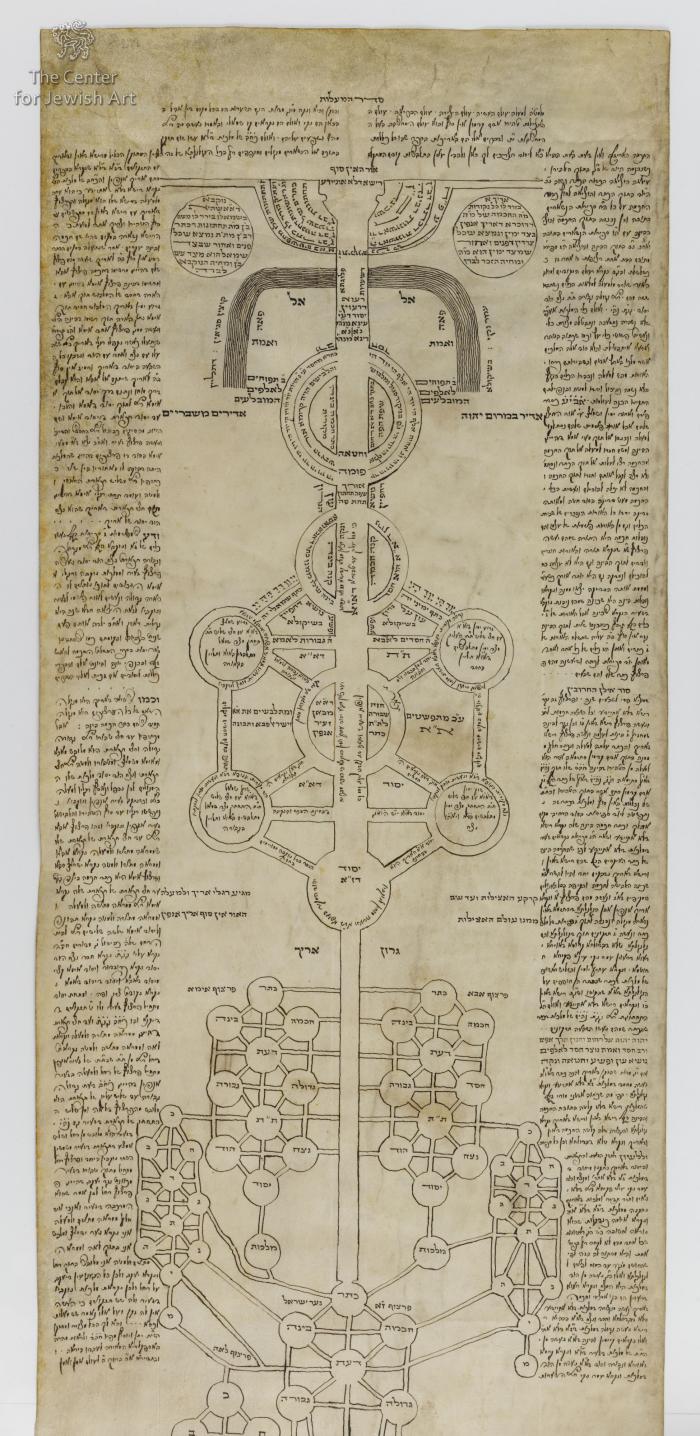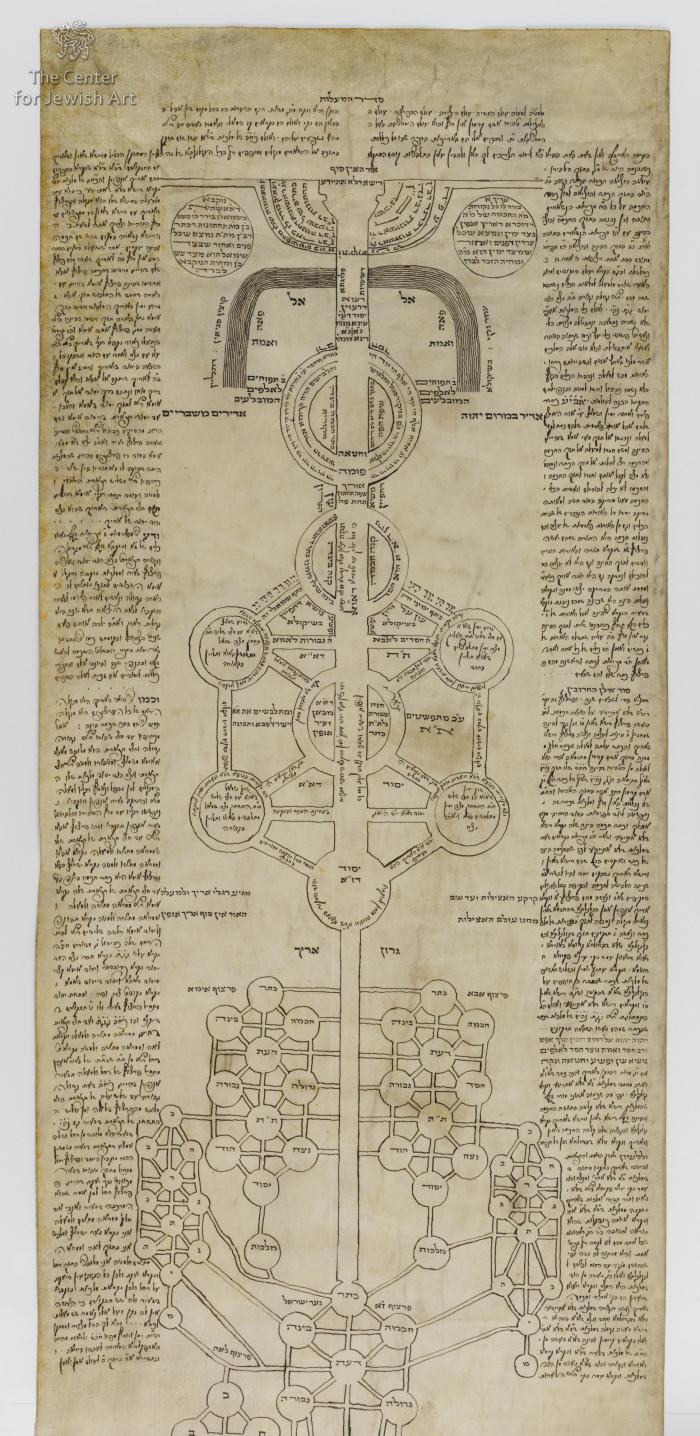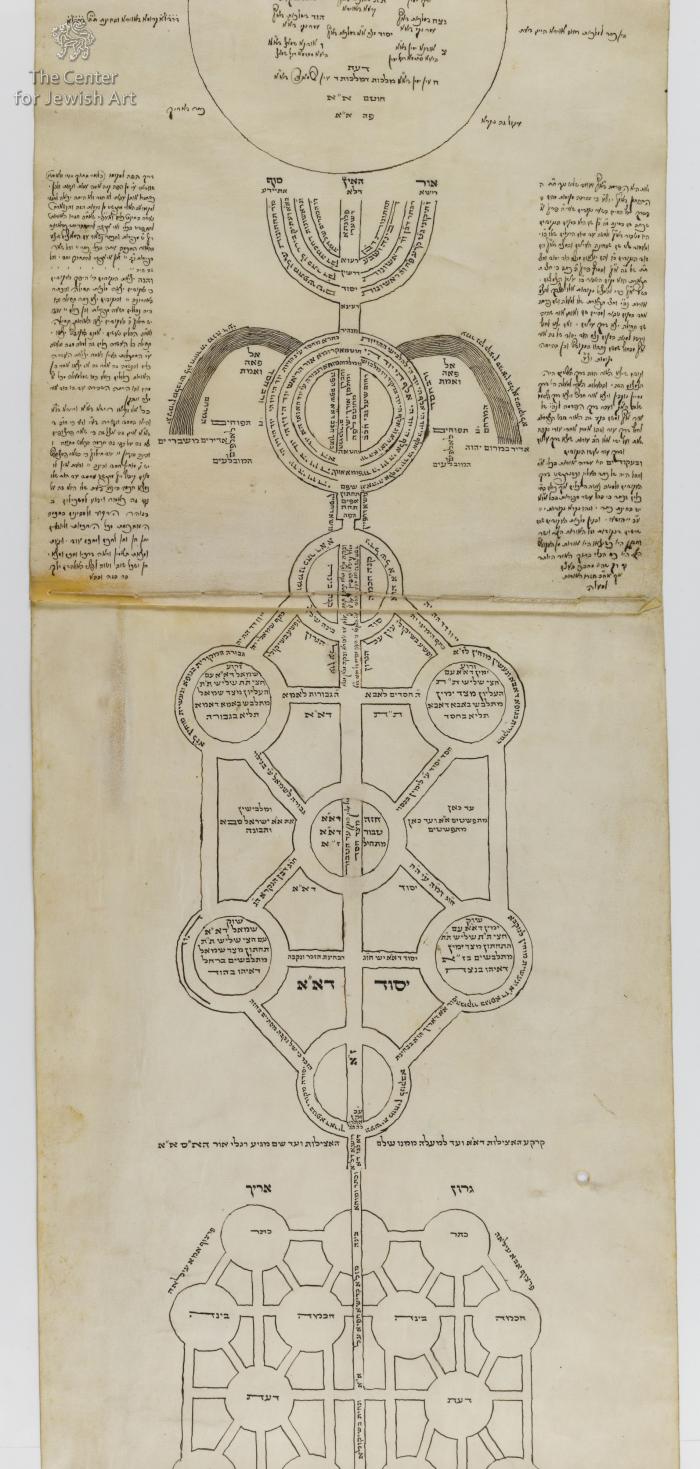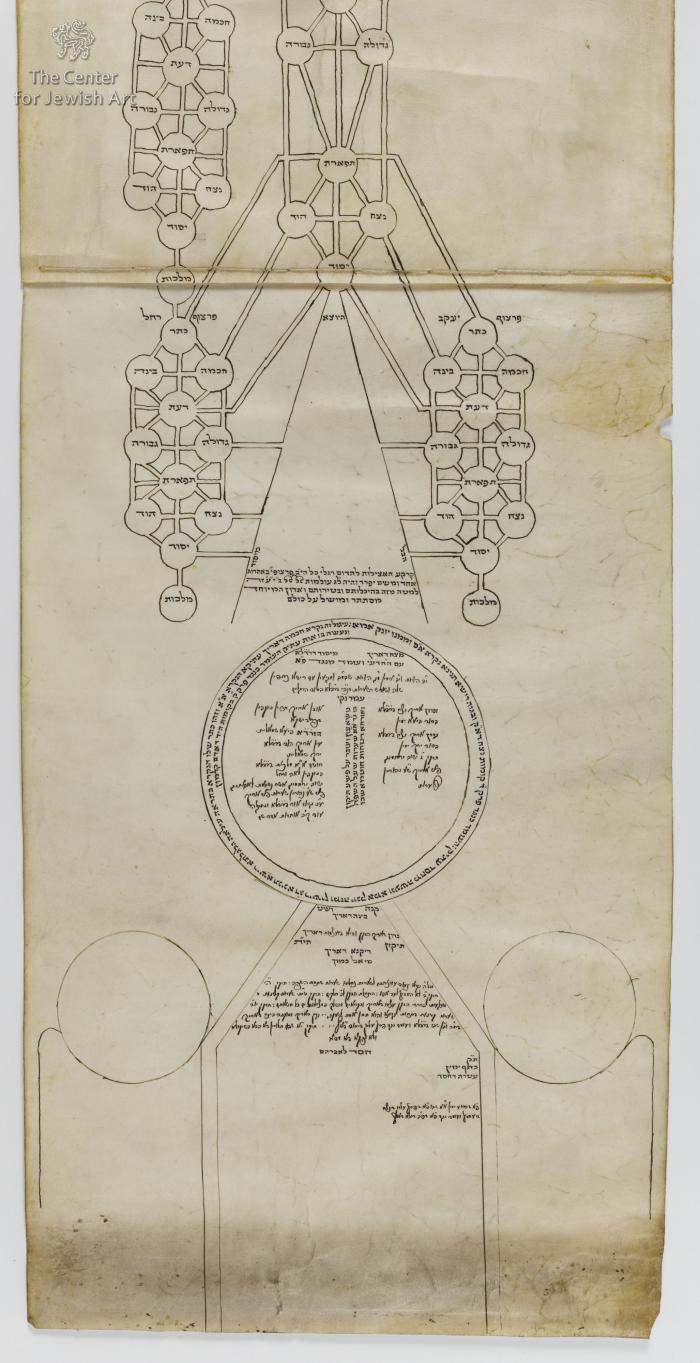Obj. ID: 45438 Great Tree, Eastern Europe, mid-eighteenth century

sub-set tree:
The following description was prepared by William Gross:
Kabbalistic diagrams resembling Porphyrian trees have been known at least since the sixteenth century as “Ilanot” [Heb. pl. Arborae; sing. "Ilan"]. [First such reference known to me is in the work of Guillaume Postel, who refers to "Ilanoth" as a genre of rabbinic literature.] Ilanot constitute visual representations of kabbalistic cosmologies from the relatively simpler forms of the thirteenth century to the far more complex and ramified systems in Lurianic Kabbalah from the sixteenth century onward. The increasing complexity of cosmic trees between the thirteenth and eighteenth centuries directly reflects the exponential ramification of kabbalistic theosophy that took place over those centuries. Given the overwhelmingly visio-spacial conceptions of the divine in its evolutionary “becoming” in these mystical traditions, Ilanot could serve as cosmic maps. This divine cartography aspired to capture the syncronic interrelations between the various facets of the godhead and creation as well as their diachronic, evolving emergence.
What’s an Ilan? Any synoptic diagrammatic presentation of kabbalistic cosmology. The basic graphical forms could range from the arboreal to the boldly anthropomorphic. Lurianic Ilanot, in their lengthy and complex presentations, often feature both, as well as spreadsheet-like tables. The iconic decadal tree is an Ilan, as is the intricately Baroque Hammerschlag Ilan. Diagrams expressing particular concepts within a larger framework, such as the illustrations that frequently accompany certain cosmogonic discussions in the Lurianic corpus, would doubtfully have been called ilanot by anyone. However simple or complex the pictorial-diagrammatic features of an Ilan, extensive textual material is frequently embedded in and around the geometrical forms. The texts may be paraphrastic chapter headings, original compositions, or the study notes of a student. Their connection to the pictorial features alongside which they appear is usually clear, with the text providing a verbal key to the quality or process depicted graphically. That said, in complex Ilanot, simple keying gives way to more complex and even inscrutable connections. Indeed, these manuscripts demand to be treated as “integrated systems of communication” that raise “questions about how verbal and visual patterns of meaning were constructed, combined, and modified.”
lan Aroch, the classic Kabbalistic scroll, made by the most serious Kabbalists for their own use as an aid to the study and understanding of the Kabbalistic scheme, particularly the spheres. This is an unusual example with commentary text on both sides of the diagrams. The scroll is written on cow skin on four sections.
Scroll # 5 - 4 frames (028.012.011) 1800ca? Provenance - Central Europe parchment ink written, reproduces the text by R. Yisrael[!] (Segal of Wurtzburg? no! YaShaR of Kandia ! See his Taalumot Hokhmah Basel 1629, fol. 53ff [there, YSh"R NR"V] and see ibid vol 2 fol. 197ff different diagrams there [more theurgic orientation; also not a 'perfect fit' bet. Text and visuals - needs pondering - apparently no connection with text!]! These and those need to be checked - perhaps these diagrams were merely 'artistically' appended to this text!) published in VaYakhel Moshe fol. 36a-d [with R Yisrael [Sarug?] - YSRaEL NR"V! author-attribution]; interesting graphics [not in publ. Work 197ff; incomplete ms. 22.8X211cm [prt. 5 - see Jerusalem ms, 8*5264 [27.4X100 cm] possible [missing] family-fragment and contact BzN from Kest re Ilan by woman late 17th cen] .
1. Begins after the Shevirah; describing the Tikkun [reconciliation, successful engarmenting]: top, the aspects of the Tetragrammaton of [numerical values of 45 and 52 within the domain of Atika and Arikh; followed by the Ten Sefirot of Arikh, maniFezting His Head, and the Tetrg. of 72; followed by the Body of Arikh [to Tiferet] as engarmenting the six Partzufim [Ab Im Yis.Sab Tevun Zeir Leah] - One multi-variant symbolic form of the Thirteen Attributes of the Divine Compassion of the Great Countenance [deriving from the Ancient Holy One]; followed by the Primordial Attributes of Unconditional Compassion as the roots of the Small-Developmental Countenance, and as the sources 'engarmenting' Its developmental nature, as the Eight Lower Countenances [1. Wisdom-Father 2. Understanding-Mother 3. Ancestor-Israel, male-purveyor [via the female] of wisdom to the lower countenances 4. Nurturing Understanding, female-purveyor 5. The Small-Developmental Countenance 6. Leah - Embodied Understanding 7. Jacob - the created male 8. Rachel - created female].
2. Yaakov and Rachel; then, the Circle of the Face of A"K, then Atika [RDLA] and the roots of the Partzufim Rachel and Leah [!]; followed by the circle of the face of Arikh engarmenting Atik; followed by the form that began the first frame - A"A and 13 attrib
3. The Body of Arikh as embodying the 8 lower Partzufim followed by their upper 6 differentiated forms
4. The 2 lower Partzufim; then returning to Arikh embodying Atik, followed by unfinished circles and spaces, meant to be the lower Partzufim.
Chajes, J. H., The Kabbalistic Tree האילן הקבלי, Pennsylvania State University Press 2022., pp. 352-54.








